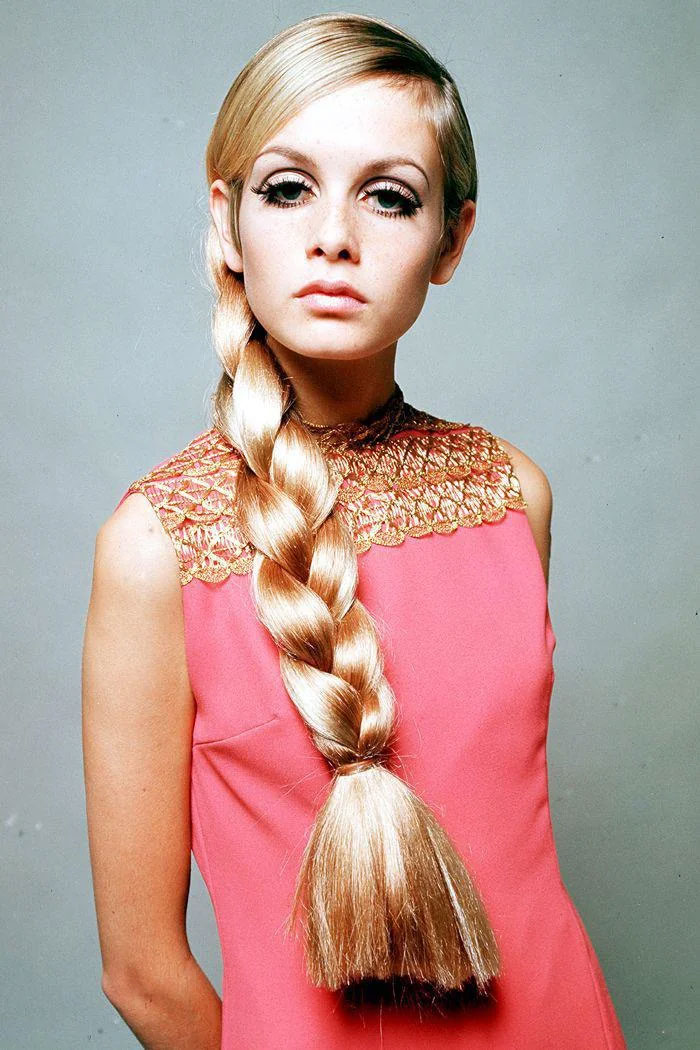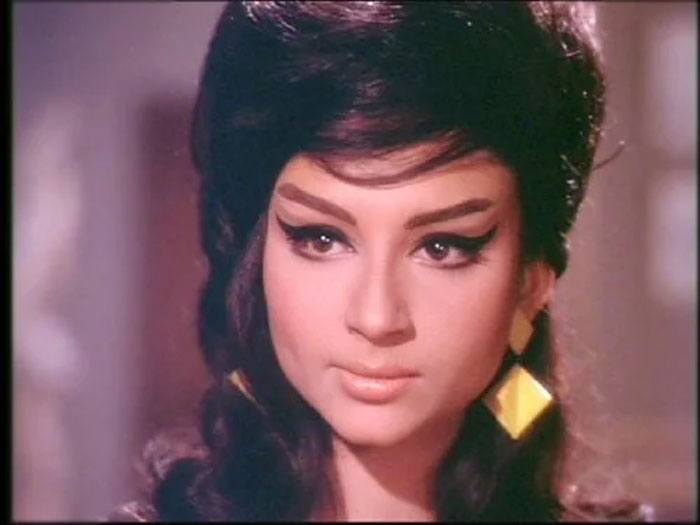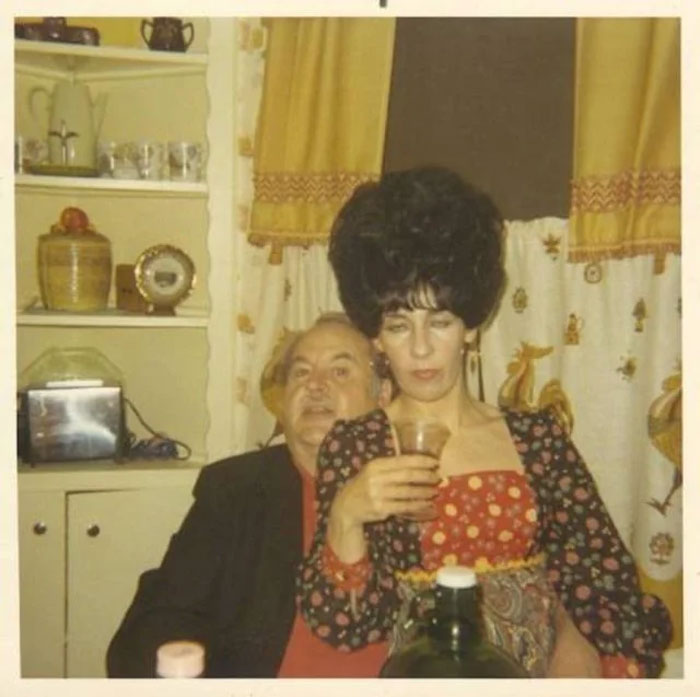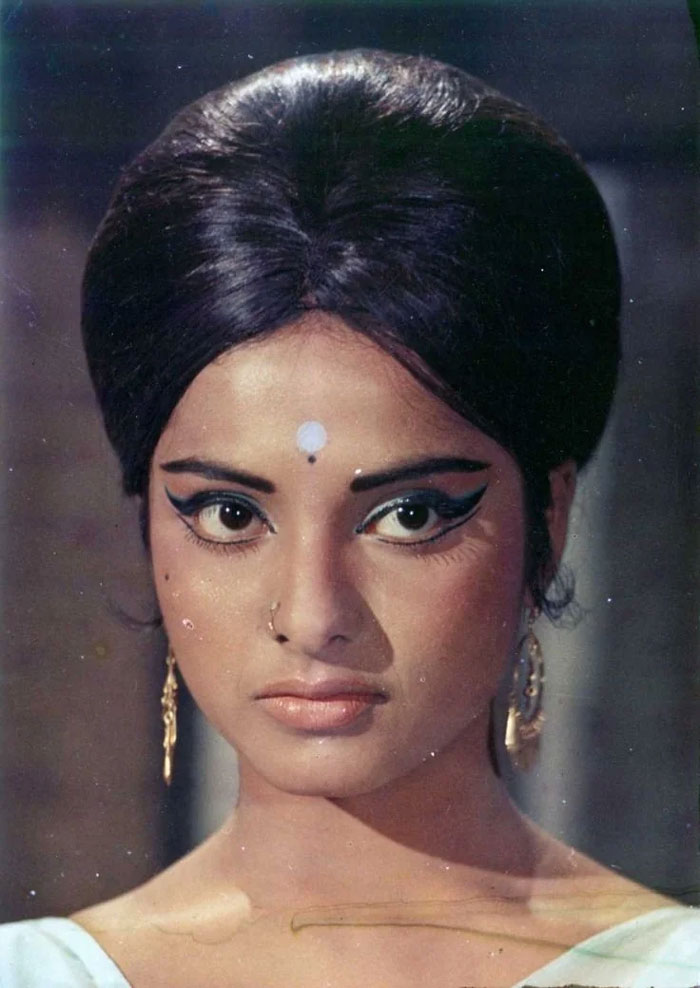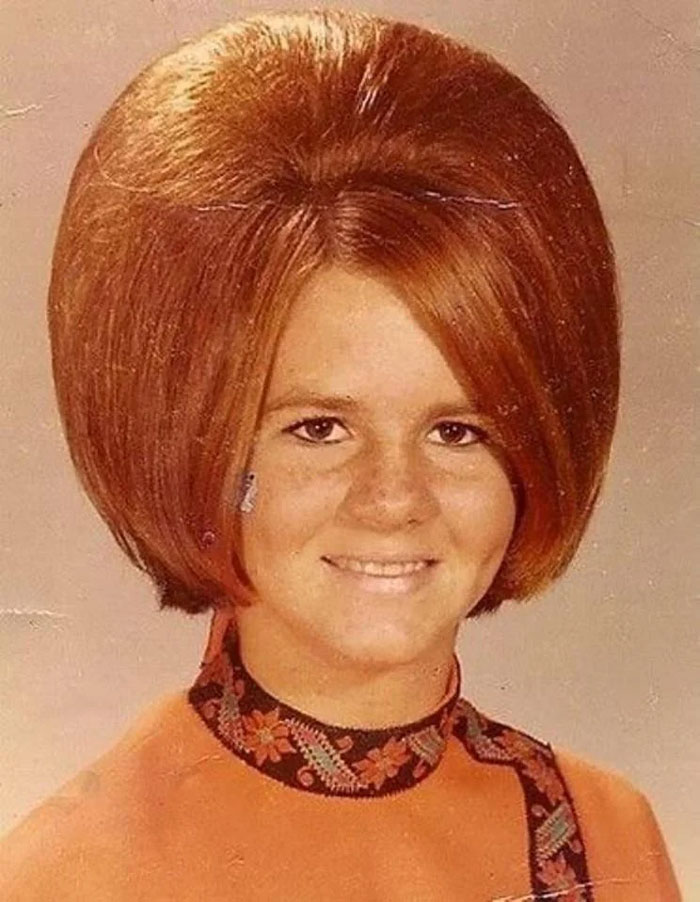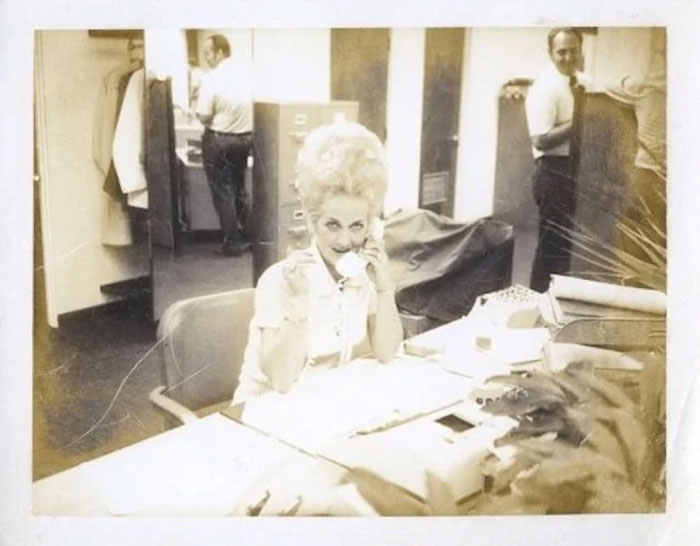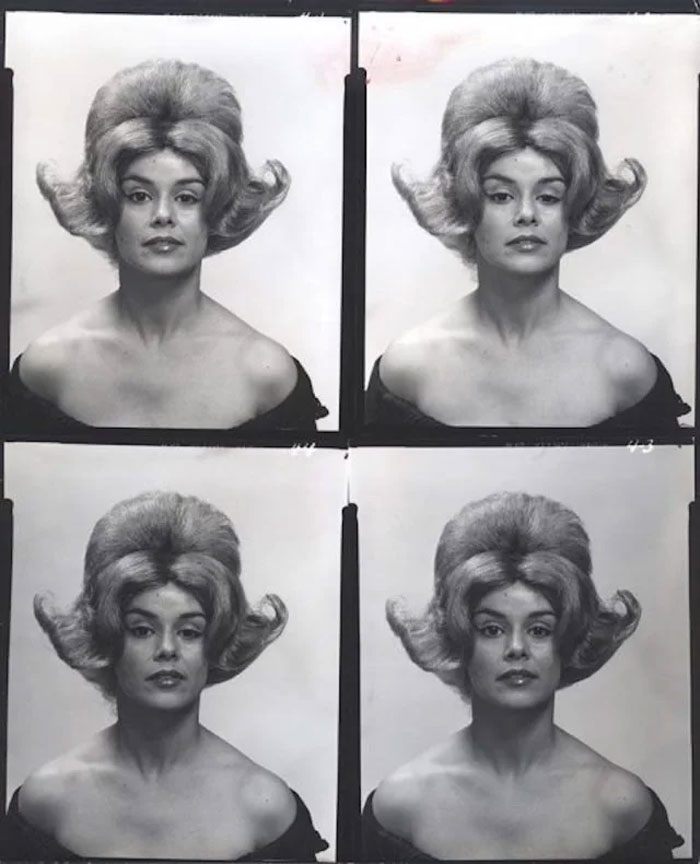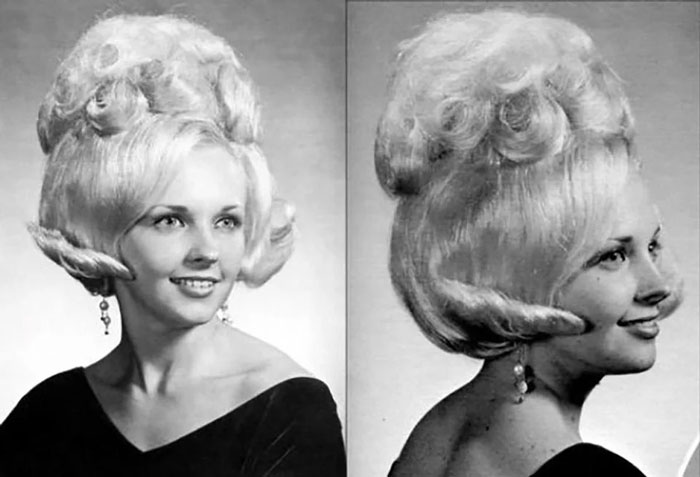
50 Women’s Hairstyles From The 1960s That Range From Hilarious To Amazing
Interview With ExpertThe 1960s were wild. In a good way, of course. It was the decade when thousands of Americans challenged democracy, fought for their freedom and equal rights, and rewrote established norms in every realm, starting from cinema and music and ending with fashion and hair. The aforementioned even became a symbol of social change as women chose shorter and edgier cuts and men grew out their locks to lengths that were considered scandalous. The bouffants, pompadours, and poodle cuts that were all the craze in the previous decades were replaced by beehives, afros, and classic shags.
To better visualize what the ‘60s hair was all about, the team at Bored Panda compiled a list full of the most incredible hairdos from this era. Get your hairspray and teasing comb ready as you scroll through, and don’t forget to upvote the ones that mesmerized you the most!
While you’re at it, make sure to check out a conversation with Kate Ross, hair specialist at Irresistible Me, who kindly agreed to chat with us about ‘60s hair.
This post may include affiliate links.
Some photos of the hairstyles are "a bit much" (haven't aged well) but others, like this one, look great! What a beautiful woman.
Icons like Diana Ross, Jackie Kennedy, Twiggy, and Brigitte Bardot all had recognizable hairdos that characterized the style of the decade. They were everything from voluminous and flipped to coiffed and cropped.
Bored Panda reached out to Kate Ross, hair specialist at Irresistible Me, to learn more about the features and intricacies of the ‘60s hair.
“The 1960s were a revolutionary decade for hair. It was a time of bold experimentation, and hair was often used to make a statement. There were two main trends that dominated the era: sleek and sophisticated styles on one end and big, voluminous hair on the other,” she explains.
Jane Birkin. The 60s and 70s incarnate. She died only last year.
“One of the most iconic styles was the bouffant, with its height and volume. This look was often paired with a rounded shape, which gave a glamorous effect,” says Ross.
The hairdo widely varied in size and shape, from slightly rounded and sleek to big, tousled with curls and waves. It wasn’t one particular look but one that involved big pouffy hair. The hairstyle’s advantage was that it was easy enough to create and wear during the day-to-day for women of all ages.
I am astounded at the height of some of these "dos". I'm barely hair-competent enough to manage a high ponytail....
Jean Shrimpton. Another lady whose sheer stylishness was absolutely effortless.
“The beehive was another big hair trend. It featured hair stacked high on top of the head, creating a kind of rounded and towering look,” adds Ross.
It was invented by a hairdresser, Margaret Vinci Heldt, and entailed stacking a woman’s hair on top of the head in a cone shape, locking it in place with large amounts of hairspray. As the name suggests, it was named after its size and resemblance to a real beehive.
“For those who preferred something edgier, the pixie cut, popularized by icons like Twiggy, was a bold and daring choice,” Ross says. When the model Twiggy became a fashion icon in the early '60s, short pixie haircuts became all the rage, modernizing women’s looks. The hairstyle was highly appealing, as it was easy to manage with a light spray of hair lacquer.
“On the more minimalistic side, we had sleek, chin-length bobs, often with sharp bangs, as seen on fashion-forward women like Vidal Sassoon’s clients,” Ross mentions.
The ‘60s was also the decade when women of color started to embrace their natural hair more. Tired of straightening their curls for more than a century, they left them natural and cut short. This was their way of expressing their black pride and identity. As women got more comfortable with their hair, their locks got longer and were teased into a classic Afro hairstyle.
Since most of the 1960s hairdos were all about height and volume, they required a lot of work and definitely weren’t a quick process, says Ross. “To get that iconic volume, women would backcomb or tease their hair, focusing on the roots to create lift. This method involved combing the hair backward toward the scalp to create a cushion of volume underneath the smoother outer layer. After teasing, hairspray was a must to lock in the height and hold the shape throughout the day. Hairspray became every woman’s best friend in the ‘60s!”
Sometimes, to achieve even more volume in the hair, women would use additional hairpieces on the crown, creating towering hairdos. Sometimes the extensions didn’t have to match the natural color—all that mattered was the height. The famous ladies who frequently sported this hairstyle were Jackie Kennedy, Lady Bird Johnson, The Supremes, and Dusty Springfield.
Is that where they got the idea for Dracula's hair on Gary Oldman?
“Women used large rollers or hot tools like curling irons to add waves and body before teasing. The rollers would often be left in for hours to ensure maximum volume. Some women even wore their styles for several days between washes,” explains Ross. “As for time, women in the ‘60s could easily spend 30 minutes to an hour on their hair each day, depending on the style. But for those with elaborate styles like the beehive, it could take even longer!”
The ‘60s hairstyles were so influential that we can still see them echoing in today's trendy hairdos. “The big, voluminous blowout we see today (think of models like the Victoria’s Secret Angels) is a modern take on the ‘60s bouffant, but with a sleeker, more polished finish,” says Ross.
The pixie cuts that were popular in the day evolved into more modern versions with added texture and volume. Even fashion icon Anna Wintour’s sharp bangs has its roots in the ‘60s. “We’re seeing variations on this style in modern looks, whether with blunt bangs or more textured fringes,” says Ross.
The 1960s beehive also remains popular but in a more toned, event-appropriate version. “These are often styled with a softer, more romantic feel, but the roots of the look definitely come from the ‘60s," concludes Ross.
That looks like a flattering hairstyle on her! She wears it well
That’s a lot of hairspray boys and girls. No wonder there was a hole in the ozone
This looks like they are stealing a wig by putting another on top and hope nobody notices.
People were wondering how much hairspray these women needed to create such hairdos
Wow! I graduated high school in 1970. I remember these styles so vividly. There are many pictures in my High School yearbook that would fit right into this collection. (I still have my high school year book - Penn Hills High School class of 1970 - go Panthers!)
It would be so much better if these lists counted down to the worst (most votes), they always start out well and get less amusing as you work your way down. I'd much rather find out the winner at the end.
“The past is a foreign country: they hairdo things differently there”
I find the large ones to be mildly terrifying. It'd take me less than a few seconds to set it on fire, catch it on a passing car, the elevator door...
Yes. I missed this horror. By 1970, when I turned 15, long, straight hair was the style.
Load More Replies...There was a ton of backcombing here. We did it again in the eighties but never to this extreme. They also had help from switches and wiglets....but backcombing gave so much volume that a reasonably short cut could be coaxed into a nice beehive. It was painful.
Many of them had pretty faces. I wonder what they would have looked like with modern hair styles - or at least without those monstrosities perched on their heads.
I used to do these starting in 1959. Hard to look back. .I quit after 8 years. My good friend who stayed a hairdresser for years after I quit, , died of pulmonary fibrosis from the hair spray and lacquer years before he should have George Green
Some of rise are real styles while others are from fashion shoots and film/TV and were not actually worn by regular people day to day.
I would've liked to see Yeoman Rand's basket weave (from Star Trek) make this list!
Some of these were only possible when women didn't work and had all that extra time to do their hair.
They didn't do their hair every day, they went to the hairdresser once a week for a wash and set, and then protected their hair with toilet paper and scarves at night, shower caps, etc. They only had to pat it into place and spray a little every morning when they got out of bed
Load More Replies...So much trouble just for hair. My hair is chin length. I sweat all day. I wash it, run a brush through it real quick and am done with it for the day. Sometimes I throw it in a tiny pony tail. I can it image putting all this stuff in my hair. I have never even owned hairspray and I am 45. But if it makes them happy, more power to them!
I don't think any of these wonderful hairdos would fit in today's cars...unless you drive a really big SUV.
Lord, please don't let bouffant hairstyles come back in style!!! Must have been a boon back then
I don't think there's enough hairspray available anymore, lol. Do they even make aerosol hairspray anymore?
Load More Replies...Wow! I graduated high school in 1970. I remember these styles so vividly. There are many pictures in my High School yearbook that would fit right into this collection. (I still have my high school year book - Penn Hills High School class of 1970 - go Panthers!)
It would be so much better if these lists counted down to the worst (most votes), they always start out well and get less amusing as you work your way down. I'd much rather find out the winner at the end.
“The past is a foreign country: they hairdo things differently there”
I find the large ones to be mildly terrifying. It'd take me less than a few seconds to set it on fire, catch it on a passing car, the elevator door...
Yes. I missed this horror. By 1970, when I turned 15, long, straight hair was the style.
Load More Replies...There was a ton of backcombing here. We did it again in the eighties but never to this extreme. They also had help from switches and wiglets....but backcombing gave so much volume that a reasonably short cut could be coaxed into a nice beehive. It was painful.
Many of them had pretty faces. I wonder what they would have looked like with modern hair styles - or at least without those monstrosities perched on their heads.
I used to do these starting in 1959. Hard to look back. .I quit after 8 years. My good friend who stayed a hairdresser for years after I quit, , died of pulmonary fibrosis from the hair spray and lacquer years before he should have George Green
Some of rise are real styles while others are from fashion shoots and film/TV and were not actually worn by regular people day to day.
I would've liked to see Yeoman Rand's basket weave (from Star Trek) make this list!
Some of these were only possible when women didn't work and had all that extra time to do their hair.
They didn't do their hair every day, they went to the hairdresser once a week for a wash and set, and then protected their hair with toilet paper and scarves at night, shower caps, etc. They only had to pat it into place and spray a little every morning when they got out of bed
Load More Replies...So much trouble just for hair. My hair is chin length. I sweat all day. I wash it, run a brush through it real quick and am done with it for the day. Sometimes I throw it in a tiny pony tail. I can it image putting all this stuff in my hair. I have never even owned hairspray and I am 45. But if it makes them happy, more power to them!
I don't think any of these wonderful hairdos would fit in today's cars...unless you drive a really big SUV.
Lord, please don't let bouffant hairstyles come back in style!!! Must have been a boon back then
I don't think there's enough hairspray available anymore, lol. Do they even make aerosol hairspray anymore?
Load More Replies...
 Dark Mode
Dark Mode 

 No fees, cancel anytime
No fees, cancel anytime 




















